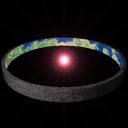I agree. Also consider the exponential increases in technological advancement on just Earth in the last 100 years; even in the last 20 years. Now, imagine it in 1 million years, 10 million years, 100 million years, 1 billion years, and onward.ORIGINAL: Epsilon
Sure I'll just refer to any advanced civilization who has already done this, that will be no problem at all.ORIGINAL: Gargantou
I'd like to see your proof that for an "advanced" enough civilization, that it's easy to create planets etc.ORIGINAL: Epsilon
Given a civilization is advanced enough, the creation of planets, terraforming and the moving of stars is easy enough. What is hard is defeating the causality complex and creating a functioning wormhole.
I dare say that in 3 billion years when we're shaping star systems to our own desires and shaping planets like they were clay we still wouldn't be able to create a functioning wormhole.
Is there ANY form of proper science that can support this claim or is it just hopeful speculation on your part?
Anyway, just a few more days for DW now(hopefully), I hope I'll enjoy it when it comes out!
It's basic physics, we're allowed to move matter around and matter interacts within the rules and limitations of fields of gravity.
I'll wager that once mankind has the ability to study stellar nurseries in detail, the knowledge of how to pull mass together to create a small planetoid and create a molten core will not be far away.
However I can't imagine how mankind would ever figure out how to punch a hole in space that would allow near instantaneous travel from one point to another millions of light years away.
Most of our technological advances stems from interacting and perceiving the nature and the universe around us, the causality complex is such that you cannot die from a bullet that hasn't been shot yet, nothing thats naturally occuring within the known universe or within our laws of physics that shows such a thing to be possible and so faster than light travel will also be an utopia
Also, again, maybe we and others would not form solid sphere planets due to the loss of surface area of the mass. Perhaps we and others would create huge orbital rings and spheres that rotate for gravity; or just use some form of artificial gravity. Later we wcould make Ringworlds and Sphereworlds that enclose stars. Perhaps others have already done this.
Using the same mechanics in stellar nurseries we could create stars then create Orbitals around them.
The same theory can apply to the creation of stable worm holes, trans warp conduits, artificial gravity, etcetera. Given enough time on a grand scale and exponential rate of advancement then I think many imanginable and unimanigable things are possible.








